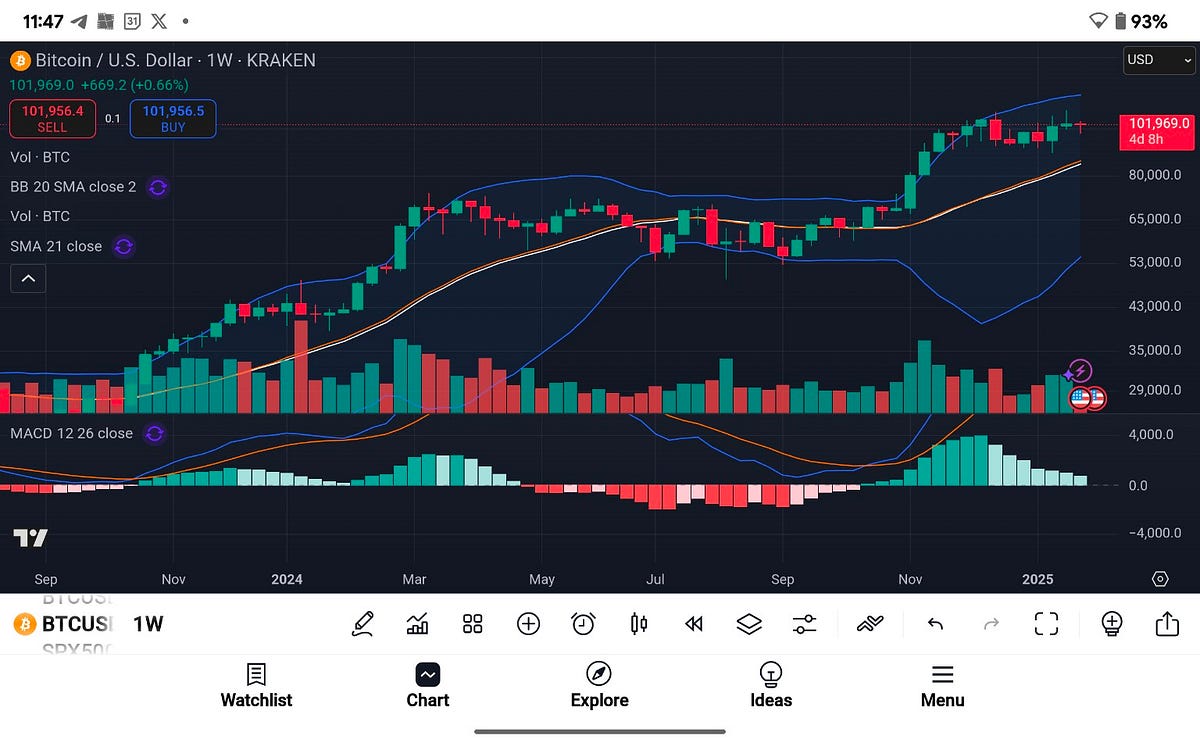 Photo by DrawKit Illustrations on Unsplash
Photo by DrawKit Illustrations on UnsplashThe Bitcoin network is continually expanding, solidifying its dominance in the crypto market.
However, this rapid growth has led to a strain on the network’s resources, particularly in mining activities.
As a result, the network can become slow, causing transactions to experience delays in confirmation or even remain stuck in the mempool indefinitely.
Fortunately, there are several solutions to address these transaction delays.
Today, I’ll explain another effective solution: Replace-By-Fee (RBF).
What Is RBF?
Replace-by-fee (RBF) is a method that helps unstick Bitcoin transactions by allowing users to replace their original transaction with one that includes a higher fee.
The main reason transactions get stuck is due to insufficient fees.
Miners prioritize transactions with higher fees since they receive a block reward along with the transaction fees as compensation for their work.
Given the growing size of the Bitcoin network and the limited number of active miners, this imbalance often results in low-fee transactions being delayed or ignored.
RBF addresses this by enabling users to create a new transaction with the same amount but with a higher fee, increasing the likelihood of confirmation by a miner.
How Does RBF Work?
In the Bitcoin network, every transaction has to pass certain steps to ultimately make it to the blockchain.
For example: Let’s say you make a transaction with the fee of 1 satoshi/byte, firstly, your transaction goes to the node that confirms your transaction is valid and stores it with a bunch of other transactions in mempool.
Miner came looking for the transaction in mempool, most likely looking for the higher fee transaction to add into the network so that they get a high reward.
As your transaction has the 1 satoshi/byte fee, it will get ignored, so you and your recipient have to wait for a very long time to finish the transaction, or even the transaction can be stuck in mempool forever.
This is where RBF came in, helping you replace the old transaction with the new transaction that has the same inputs as the old one but with a higher fee, this will increase the probability of getting miner confirmation.
To understand deeper, let’s look at different types of RBF transactions.
Types of RBF
#1. Full RBF
This variant of RBF is the same as what I explained above, allowing a transaction to replace an older one so long as it pays a sufficient fee.
#2. Opt-in RBF
Under this variant, the sender has to flag a transaction as a replacement before it is sent.
One downside of this variant is that users must know in advance when they may wish to replace a transaction. For this reason, many wallets elect to use Opt-in RBF as default.
#3. First-Seen-Safe RBF
In this variant, the sender is only allowed to replace the transaction if all the amounts of all the outputs from the original transaction have to be met.
This variant is created because of countering the enormous claim against RBF it makes double-spend attacks easier.
One downside of this variant is that the change output is necessarily treated as a payment and cannot be reduced. This results in larger transaction sizes (as additional inputs must be added) and, therefore, fees.
#4. Delayed RBF
As a name, this variant allows replacing the original transaction only after it has not been included in a block for a certain number of blocks.
This RBF allows a sender to give miners time to include their transaction in a block at a lower fee, thereby potentially saving the sender money.
Ok, now you understand the concept of RBF, and it is the right time to look at some advantages and disadvantages.
Advantages of RBF
Speedup The Transaction
The primary benefit of RBF is that it accelerates the confirmation process, providing a solution when transactions are stuck in the mempool.
Efficient Use of Block Space
RBF helps ensure that the Bitcoin blockchain operates efficiently by allowing stuck transactions to be confirmed, preventing the network from being clogged with low-fee transactions.
Effective Fee Market
Allowing unconfirmed transactions to get a confirmation in a second attempt by increasing the fee can result in a more effective fee market for Bitcoin Blockchain.
These are all some advantages of RBF.
Now, look at some Disadvantages.
Disadvantages of RBF
Leads To Double Spend Attack
RBF has been criticized for making it easier to double-spend unconfirmed transactions.
Despite this criticism, various RBF variants have been developed to mitigate this risk and ensure transaction security.
Now that you understand the concept of RBF, let’s look at some wallets that support this feature.
List of RBF-Enabled Wallets
Electrum
A famous Bitcoin software wallet offering comes with an RBF option.
Electrum is one of the few wallets that supports RBF for both sending and receiving.
Trezor
Trezor wallet is a well-known crypto hardware wallet.
Their desktop app Trezor Suit fully implemented RBF from version 21.2.2 and also has on-device support for Trezor Model T with firmware 2.3.5 and up, as well as Trezor Model One with firmware 1.9.4 and up.
Edge Wallet
Edge wallet is the mobile wallet for both Android and iOS users supporting RBF.
Exodus Wallet
Exodus is a leading Desktop, Mobile, and Hardware wallet with a built-in exchange supporting RBF.
BitPay Wallet
BitPay is the leading Bitcoin payment service provider. They added the RBF support to its mobile wallet.
Bitcoin Core
Bitcoin Core is a full Bitcoin client allowed to change the fee to boost the translation using RBF.
Final Thoughts….
Replace-By-Fee (RBF) is an essential tool for those who need to expedite transactions stuck in the mempool by paying a slightly higher fee.
With the growing support from various wallets, RBF has become a practical solution for navigating the increasingly busy Bitcoin network without the frustration of long wait times for transaction confirmations.
What Is Replace-By-Fee (RBF) in Bitcoin? Exploring Its Advantages and Supported Wallets was originally published in The Capital on Medium, where people are continuing the conversation by highlighting and responding to this story.

 2 months ago
42
2 months ago
42









 English (US) ·
English (US) ·